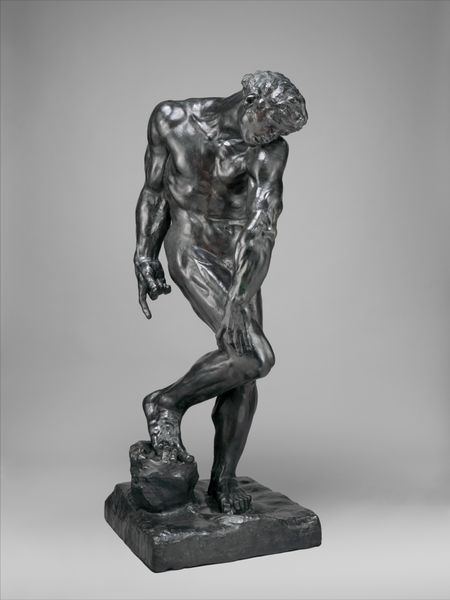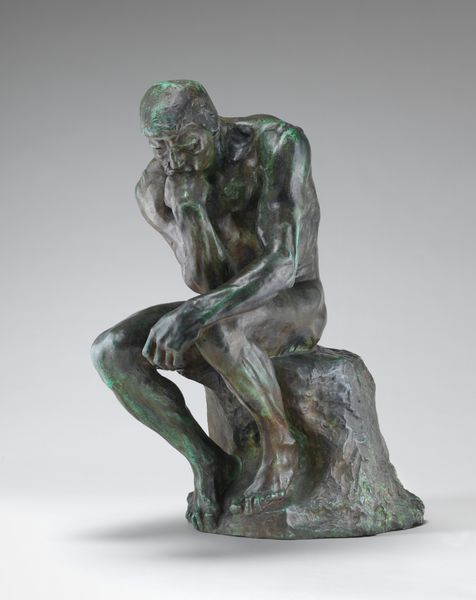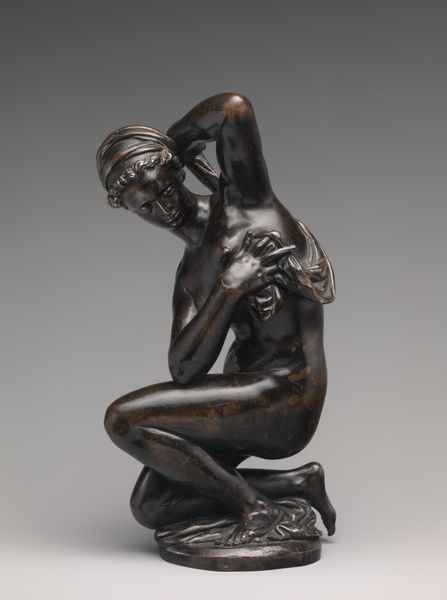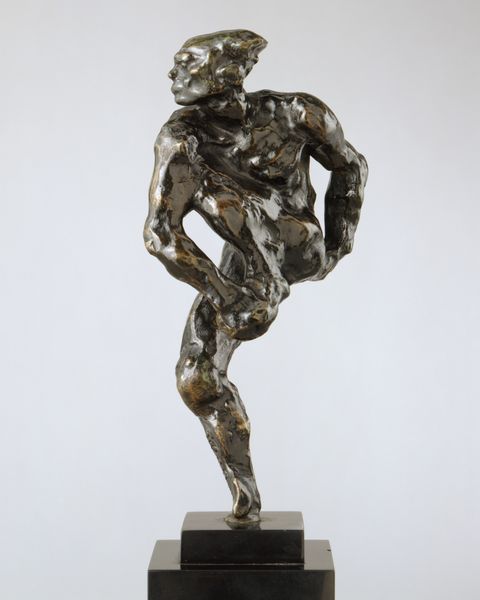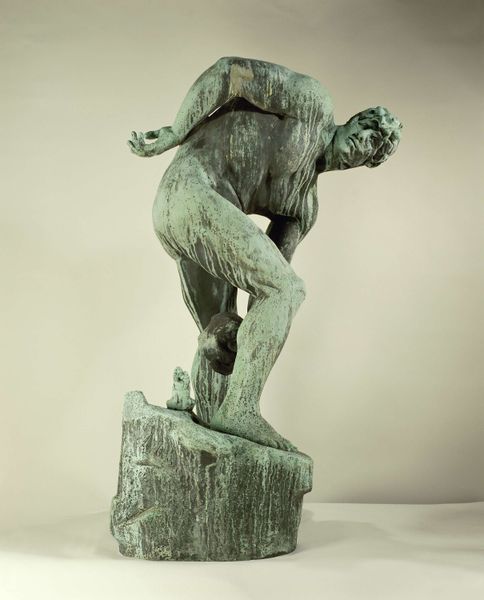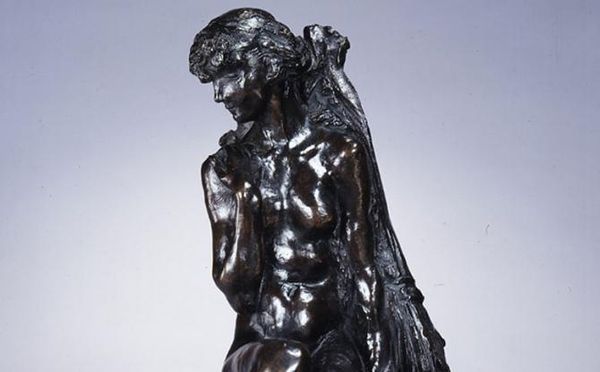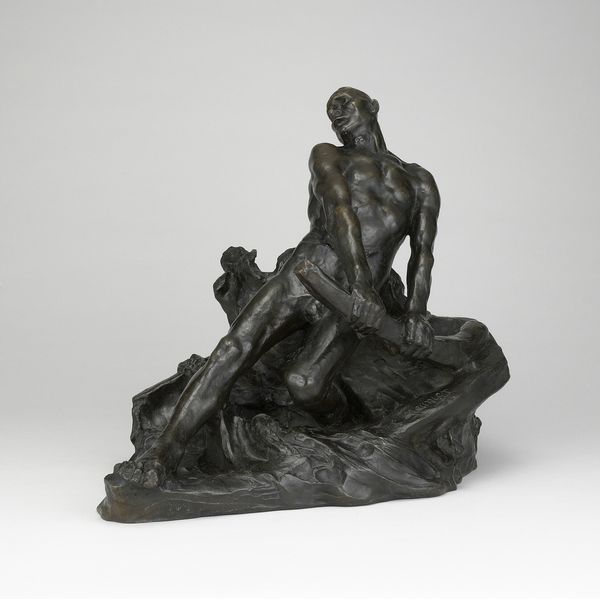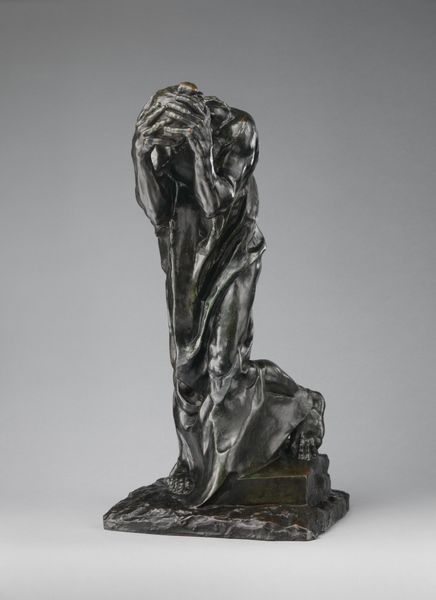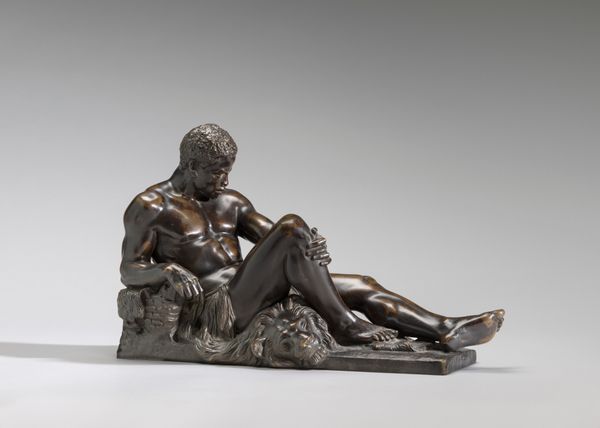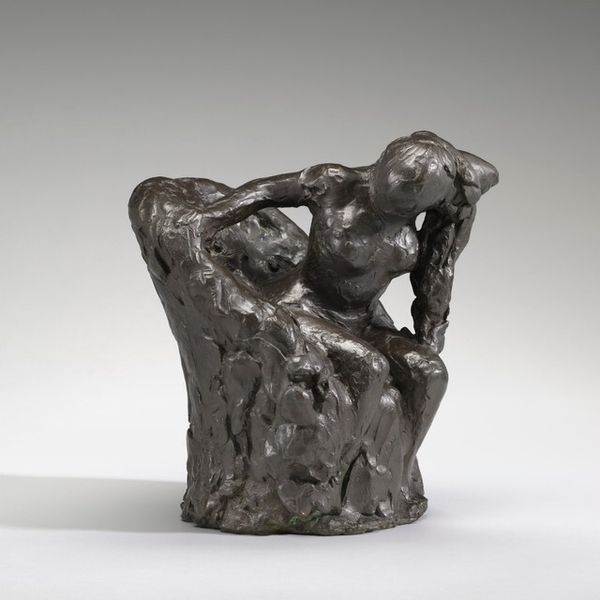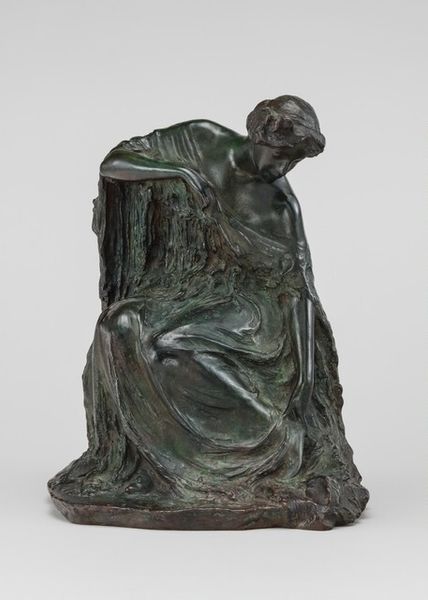
The Old Courtesan (La Belle qui fut heaulmière) 1880 - 1910
0:00
0:00
Dimensions: Overall (wt. confirmed): 19 3/4 × 11 × 8 in., 37 lb. (50.2 × 27.9 × 20.3 cm, 16.8 kg)
Copyright: Public Domain
Auguste Rodin created "The Old Courtesan," also known as "La Belle qui fut heaulmière," in bronze. The sculpture presents a stark contrast to classical ideals of beauty, focusing instead on the raw physicality of aging. Rodin uses a rough, textured surface to convey the subject's advanced age and the effects of time. Notice the figure's hunched posture, the deep lines etched into her skin, and the sagging flesh. These elements emphasize the body's decay, challenging conventional notions of beauty and idealization prevalent in art. The figure embodies a sense of profound introspection, with her gaze directed downwards, creating a mood of melancholy and resignation. Rodin's decision to depict such a subject reflects a broader artistic shift towards realism and the exploration of complex human experiences. Through the manipulation of form and texture, Rodin captures the transience of beauty and the inevitability of aging, inviting viewers to confront uncomfortable truths about the human condition. The sculpture’s brutal honesty disrupts traditional aesthetic values, prompting us to reconsider our perceptions of beauty, value, and representation in art.
Comments
No comments
Be the first to comment and join the conversation on the ultimate creative platform.
